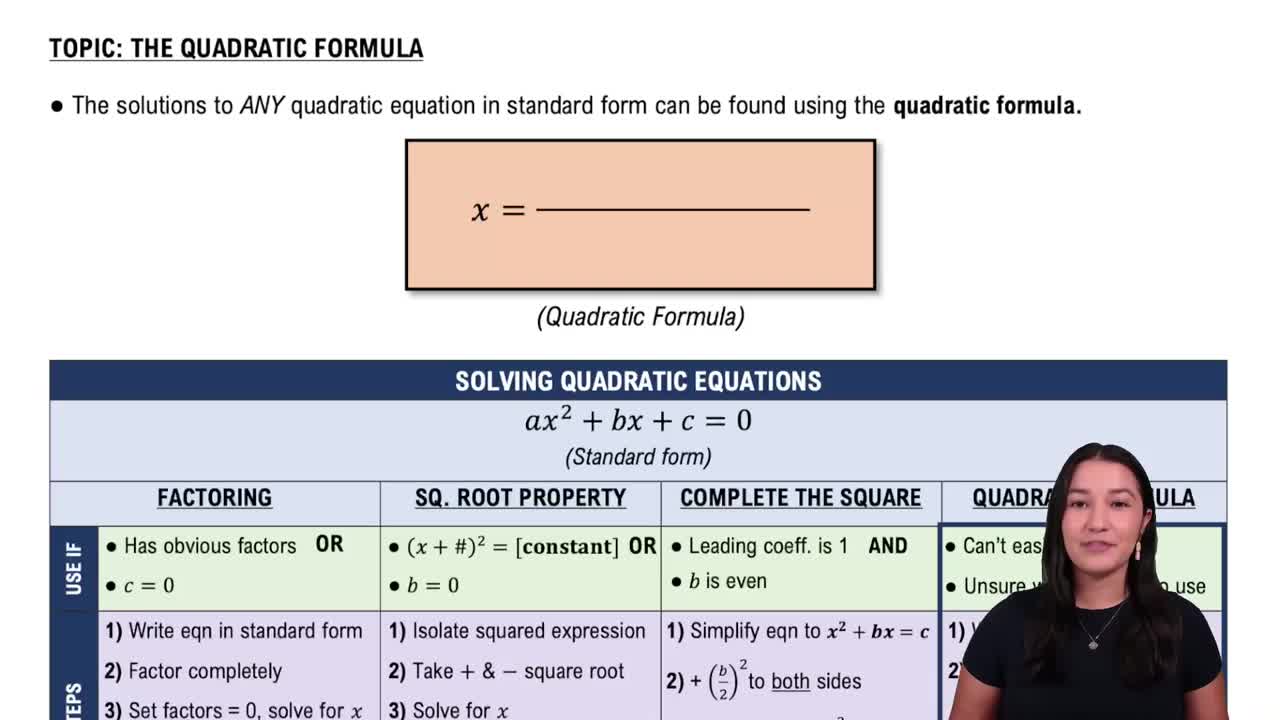Table of contents
- 0. Review of Algebra4h 16m
- 1. Equations & Inequalities3h 18m
- 2. Graphs of Equations43m
- 3. Functions2h 17m
- 4. Polynomial Functions1h 44m
- 5. Rational Functions1h 23m
- 6. Exponential & Logarithmic Functions2h 28m
- 7. Systems of Equations & Matrices4h 6m
- 8. Conic Sections2h 23m
- 9. Sequences, Series, & Induction1h 19m
- 10. Combinatorics & Probability1h 45m
9. Sequences, Series, & Induction
Sequences
Problem 11b
Textbook Question
In Exercises 11–24, use mathematical induction to prove that each statement is true for every positive integer n. 4 + 8 + 12 + ... + 4n = 2n(n + 1)
 Verified step by step guidance
Verified step by step guidance1
Step 1: **Base Case** - Verify the statement for the initial value, usually n = 1. Substitute n = 1 into both sides of the equation: Left side: 4, Right side: 2(1)(1 + 1). Check if both sides are equal.
Step 2: **Inductive Hypothesis** - Assume the statement is true for some positive integer k, i.e., 4 + 8 + 12 + ... + 4k = 2k(k + 1).
Step 3: **Inductive Step** - Prove the statement is true for k + 1. Start with the left side: 4 + 8 + 12 + ... + 4k + 4(k + 1).
Step 4: Use the inductive hypothesis to replace the sum up to 4k with 2k(k + 1), then add 4(k + 1) to it: 2k(k + 1) + 4(k + 1).
Step 5: Factor the expression: 2k(k + 1) + 4(k + 1) = (k + 1)(2k + 4). Simplify to show it equals 2(k + 1)(k + 2), which matches the right side of the equation for n = k + 1.
Recommended similar problem, with video answer:
 Verified Solution
Verified SolutionThis video solution was recommended by our tutors as helpful for the problem above
Video duration:
5mPlay a video:
Was this helpful?
Key Concepts
Here are the essential concepts you must grasp in order to answer the question correctly.
Mathematical Induction
Mathematical induction is a proof technique used to establish the truth of an infinite sequence of statements. It consists of two main steps: the base case, where the statement is verified for the initial value (usually n=1), and the inductive step, where one assumes the statement holds for n=k and then proves it for n=k+1. This method is particularly useful for proving formulas involving integers.
Recommended video:
Guided course

Types of Slope
Summation of an Arithmetic Series
The expression 4 + 8 + 12 + ... + 4n represents an arithmetic series where each term increases by a constant difference. The sum of the first n terms of an arithmetic series can be calculated using the formula S_n = n/2 * (first term + last term). Understanding how to derive and manipulate this formula is essential for proving the given statement using induction.
Recommended video:
Guided course

Arithmetic Sequences - General Formula
Quadratic Functions
The right side of the equation, 2n(n + 1), is a quadratic function in terms of n. Quadratic functions are polynomials of degree two and can be expressed in the standard form ax^2 + bx + c. Recognizing the properties of quadratic functions, such as their growth rate and the ability to factor them, is crucial for verifying the equality in the induction proof.
Recommended video:

Solving Quadratic Equations Using The Quadratic Formula

 8:22m
8:22mWatch next
Master Introduction to Sequences with a bite sized video explanation from Patrick Ford
Start learningRelated Videos
Related Practice








